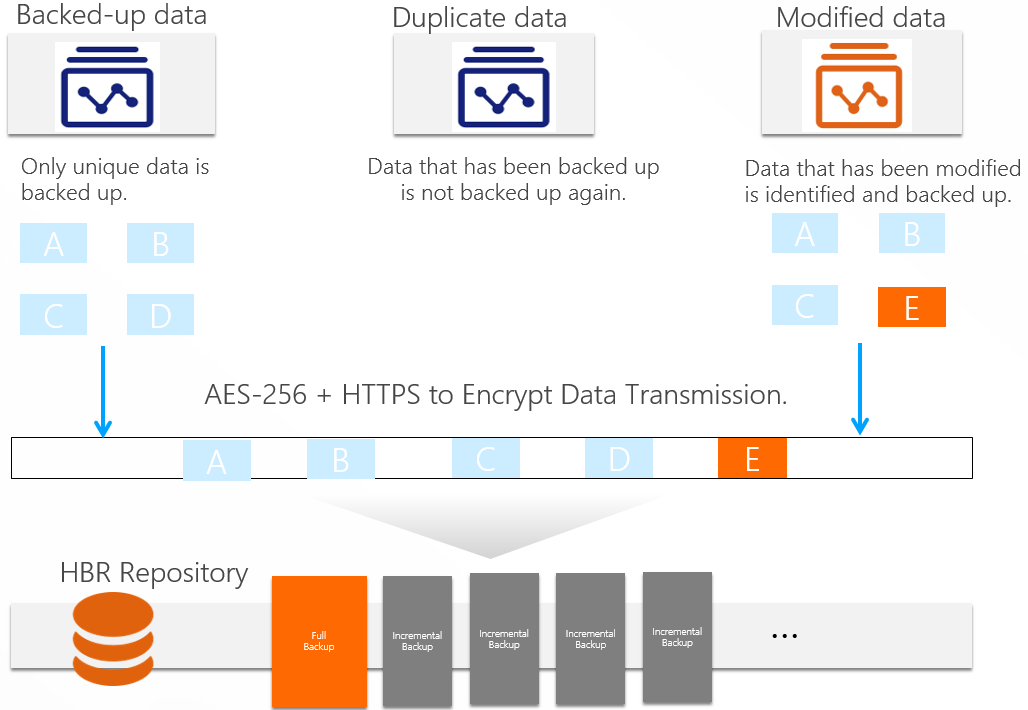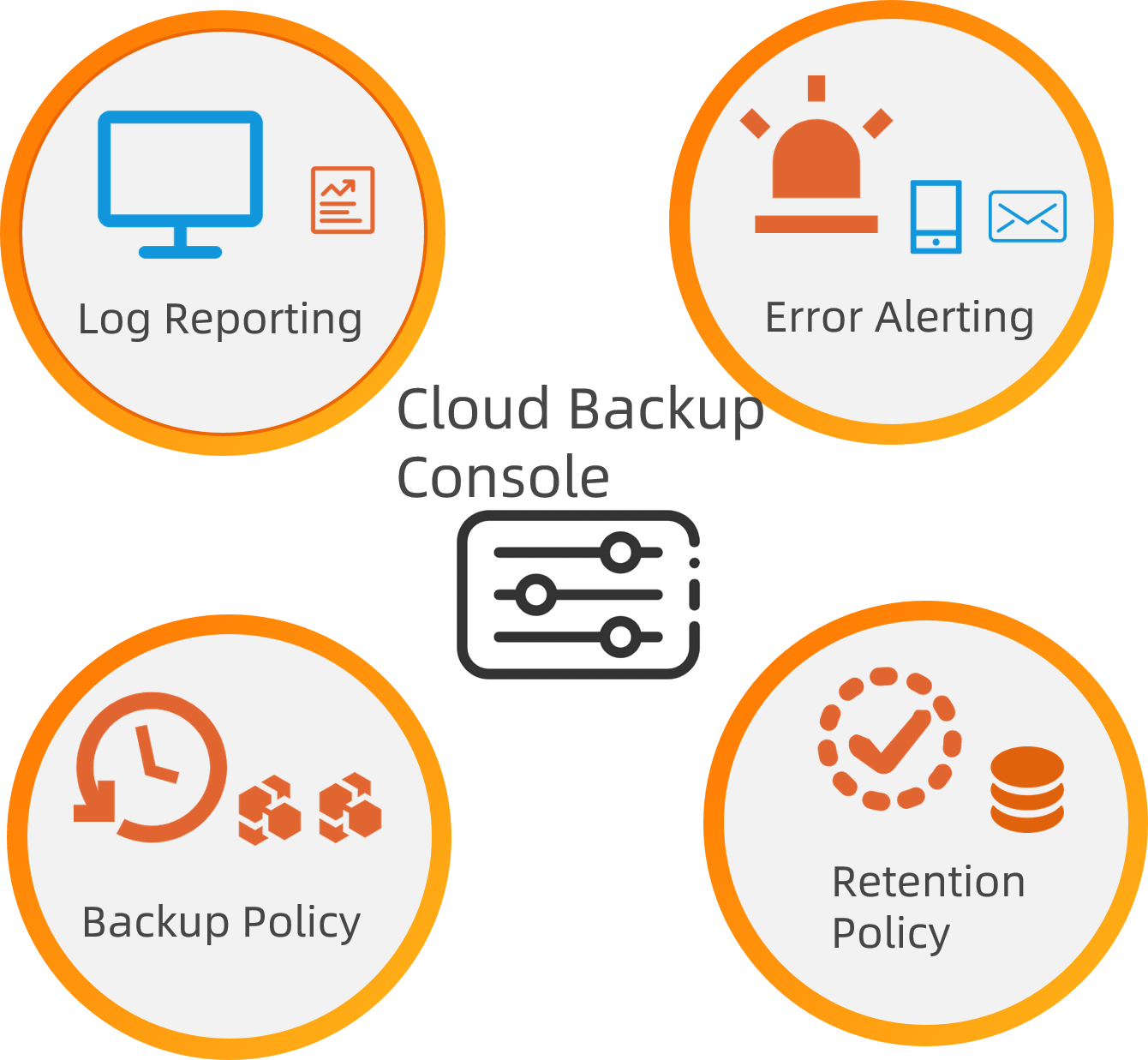Cloud Backup is a unified platform that is developed by Alibaba Cloud for backup and disaster recovery (BDR). Cloud Backup provides features such as data backup, disaster recovery, and policy-based data archiving.
Necessity of BDR
BDR is an important method for enterprises to protect core business data against ransomware, system failures, natural disasters, and O&M accidents that cause data loss and damage. BDR helps enterprises meet data security and compliance requirements in various industries.
Data risks
Ransomware, system failures, natural disasters, and O&M accidents have a huge negative impact on business data. This may lead to unexpected data loss and damage.
Data security and compliance requirements
The following information security regulations clearly state that data integrity, confidentiality, and availability shall be maintained: Multi-level Protection Scheme (MLPS) 2.0, Personal Information Protection Law (PIPL), and Regulation on Protecting the Security of Critical Information.
In 2020, a core employee of a company deleted a database without authorization. The event disrupted the SaaS business of the company. The company lost over one billion Hong Kong dollars of market value. Millions of merchants suffered temporary business suspension.
Advantages of cloud disaster recovery
Cloud disaster recovery has the following advantages over traditional data centers in terms of cost, deployment efficiency, and O&M.
Item | Cloud Backup | Traditional data centers |
Cost of ownership | You are billed for using Cloud Backup resources based on the pay-as-you-go billing method. This reduces the total cost of ownership (TCO). | You need to procure both software and hardware. Upfront costs are high. |
Deployment efficiency | Cloud Backup is an out-of-the-box cloud service. You can deploy the service within only one day. | Several months or years are required to build a data center. |
O&M | High scalability, high reliability, and maintenance-free. | Complex O&M and high workloads. |
Robustness | Geo-redundancy offers additional protection. You can enable the feature with one click. | Data loss may occur in regional natural disasters. |
Recovery drill | You can perform recovery drills based on your business requirements without affecting production. | A long period of time is required to prepare for a recovery drill. |
Advantages of Cloud Backup
Technical advantages
Cloud Backup can identify and delete duplicate data with high accuracy and efficiency.

Item
Description
Features
Cloud Backup accurately identifies duplicate data in lengthened data slices and uploads and backs up only the incremental data segments of the data slices. If a data segment already exists in the backup vault, Cloud Backup does not upload the data segment to the backup vault again.
Advantages
Cloud Backup can duplicate and compress data with high efficiency. The deduplication and compression ratio can reach up to 30:1. In some scenarios, a backup service without the deduplication feature requires 30 times more storage usage than Cloud Backup.
Benefits
Cloud Backup reduces your backup and storage costs. You can retain your previous backups for a long period of time with an affordable budget. In hybrid cloud scenarios, data is deduplicated at the backup source. This can reduce the bandwidth that is consumed to migrate your business.
O&M advantages
Automatic backup and monitoring are supported.

Item
Description
Features
You can configure policies of full backup, incremental backup, log backup, and real-time backup as needed. You can receive alert notifications from multiple channels such as text messages and emails. You can also view the details about historical backup jobs and error log reports in the Cloud Backup console.
Advantages
You need to configure backup policies only once before the backup process is fully managed by Cloud Backup. Cloud Backup monitors end-to-end backup jobs and sends alert notifications if errors occur.
Benefits
You do not need to perform O&M. This helps you optimize labor costs. Cloud Backup fully manages data backup to ensure data security.
User experience advantages
Cloud Backup provides a user-friendly GUI. In the Cloud Backup console, you can view the list of backup plans, disaster recovery records, and recovery points. You can also start disaster recovery drill with one click.
Item
Description
Features
Interfaces for scenarios such as file backup, database backup, and ECS disaster recovery are specifically designed. Step-by-step guidance is provided for backup and disaster recovery.
Advantages
Backup plans, backup points, and recovery points are clearly displayed in the Cloud Backup console. This simplifies disaster recovery.
Benefits
The features provided in the Cloud Backup console are easy to learn and use. This minimizes the effect of a turnover of O&M staff.
Security advantages
Cloud Backup provides the immutable backup feature that can improve the security management of your data backup. This feature protects your data against unexpected operations, malicious attacks, and unauthorized backup or restoration and helps meet data security and compliance requirements. Cloud Backup For more information, see Isolate backup permissions and recovery permissions.
Item
Description
Features
KMS encryption
Immutable backup
Isolation of backup permissions from recovery permissions
Advantages
You can enable KMS encryption and the immutable backup feature in the Cloud Backup console with only one click.
Benefits
You can enable the security enhancement features of Cloud Backup to improve the security management of your data backup. These features can protect your data against unexpected operations, malicious attacks, and unauthorized backup or restoration to meet your data security and compliance requirements.
The following table describes the advantages of Cloud Backup over a backup system deployed in a self-managed data center or on the cloud.
Item | On-premises backup system | Cloud Backup |
Permission management | Not supported. No strict permission management is available. Therefore, misoperations such as accidental data deletion may occur. | Supported. Cloud Backup |
Deduplication and compression | Not supported. Duplicate backup data increases storage costs and lowers the backup speed. | Supported. Cloud Backup uses deduplication and compression technologies that are developed by Alibaba Cloud. This can effectively reduce the amount of transmitted data and storage usage, increase the backup speed, and reduce costs. |
Backup alerting | Not supported. If a backup failure occurs, you must manually track the backup process to identify the failure cause. Otherwise, you may find the backup failure only when you attempt to restore data from the backup. | Supported. Cloud Backup provides the backup alerting feature. You can use this feature to send alert notifications to specified contacts if a backup fails or a client is disconnected from a server. |
Lifecycle management | You must manually manage the lifecycle of backup data. | Cloud Backup automatically manages the lifecycle of backup data. |
Remote backup | Not supported. | Cloud Backup allows you to create a remote mirror vault for a backup vault. You can use a mirror vault to back up or restore data across regions. For more information, see Back up data across regions. |
Data restoration | You must manually restore data from multiple data replicas. | Cloud Backup |
Management costs | High. You must compile scripts to back up data and dispatch dedicated engineers to manage backups. The complex and difficult O&M reduces resource utilization and increases management costs. | Low. Cloud Backup manages your backup data in cloud vaults. You do not need to worry about backup management issues, such as hardware procurement, configuration, cluster scaling, and security. |
Data encryption | You must build a system to encrypt data. | Cloud Backup uses the Advanced Encryption Standard (AES) 256-bit algorithm or Key Management Service (KMS) to encrypt and transmit data from a backup source and store the backup data in the cloud. During data transmission, Cloud Backup also uses HTTPS to encrypt data. For more information, see Isolate backup permissions and recovery permissions. |
Immutable backup | Not supported. | The immutable backup feature supports the Write Once Read Many (WORM) policy. If you enable this feature, you can write data to all backup vaults only once and read data from the backup vaults multiple times. The feature provides additional protection for your backup vault. For more information, see Isolate backup permissions and recovery permissions. |
High availability of data | You must manually manage the availability of backup data. | Cloud Backup provides the multi-copy redundancy technology and supports zone-redundancy of backup vaults. For more information, see Storage vault types. |
References
For more information about the features of Cloud Backup, see Features and Limits.
If you only activate Cloud Backup and do not perform backup operations, you are not charged. Fees are incurred only when you perform backup operations in the Cloud Backup console. For more information, see Billing methods and billable items.
If you only activate Cloud Backup, no data is backed up. We recommend that you use the various features of Cloud Backup to back up important data. If you do not back up data, the data that is lost or accidentally deleted cannot be restored. For more information, see Activate Cloud Backup.
For more information about the use scenarios of Cloud Backup, see Enterprise-class cloud disaster recovery solution.